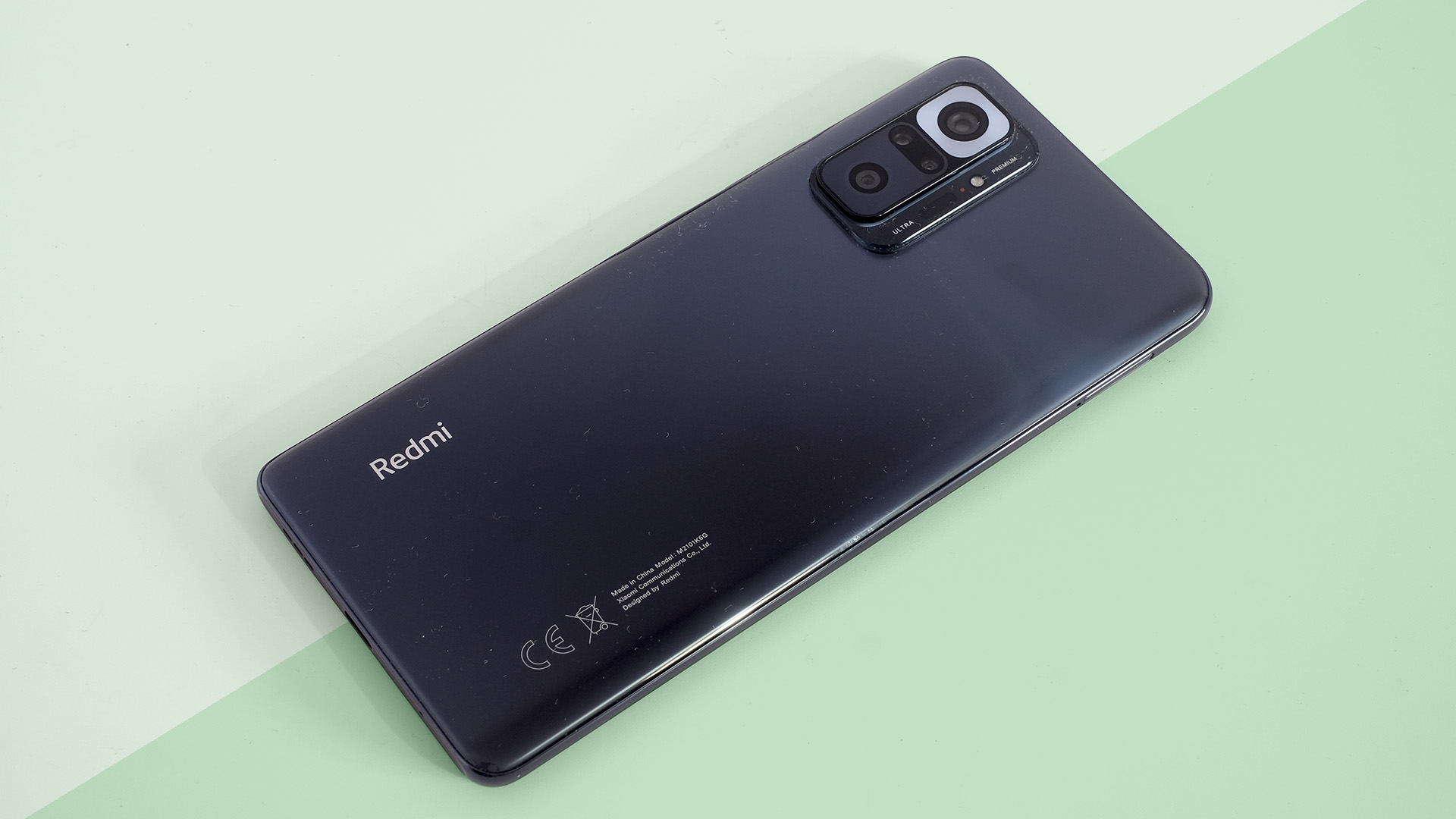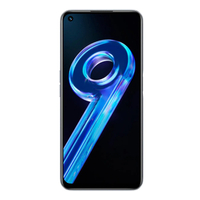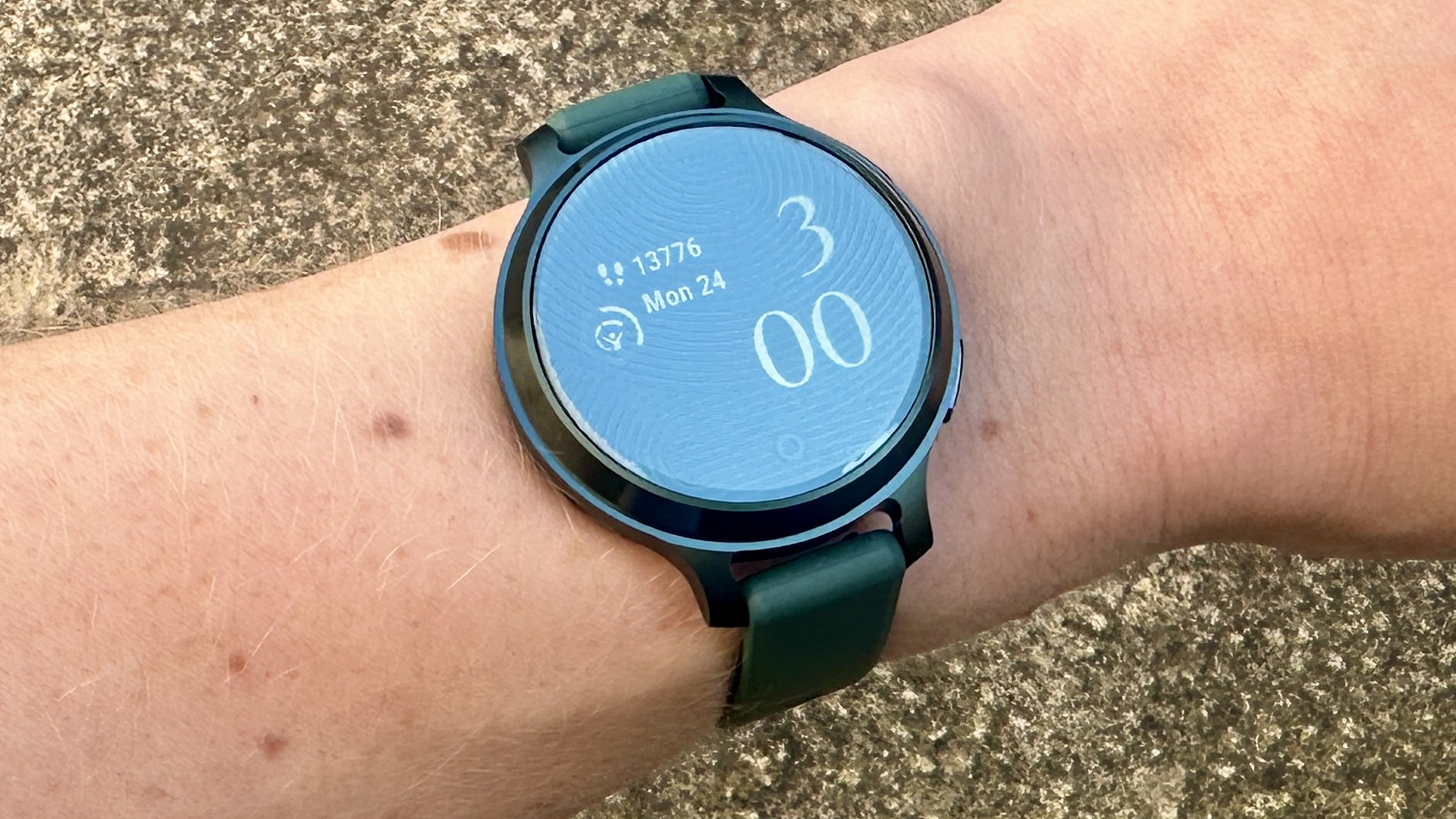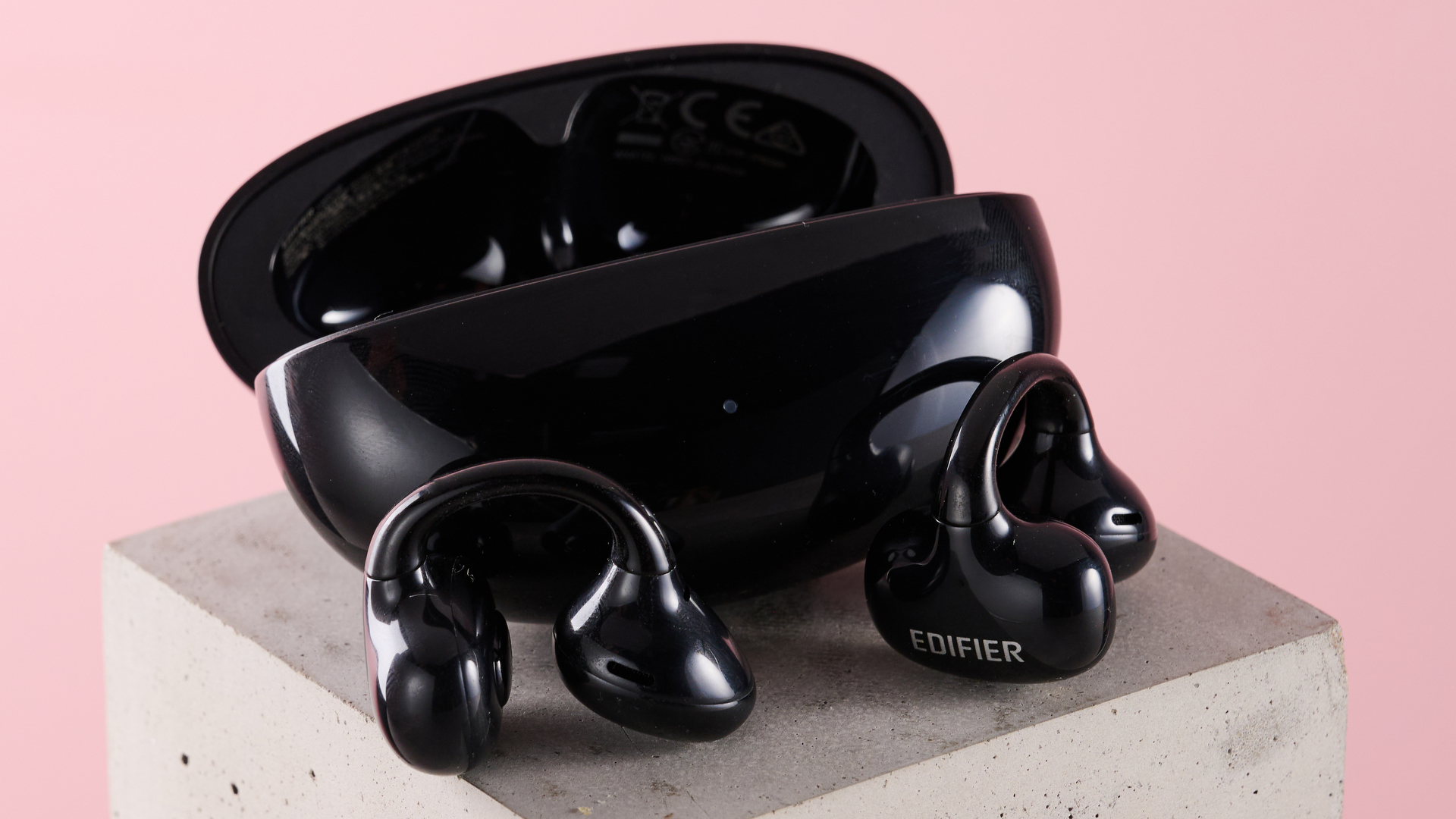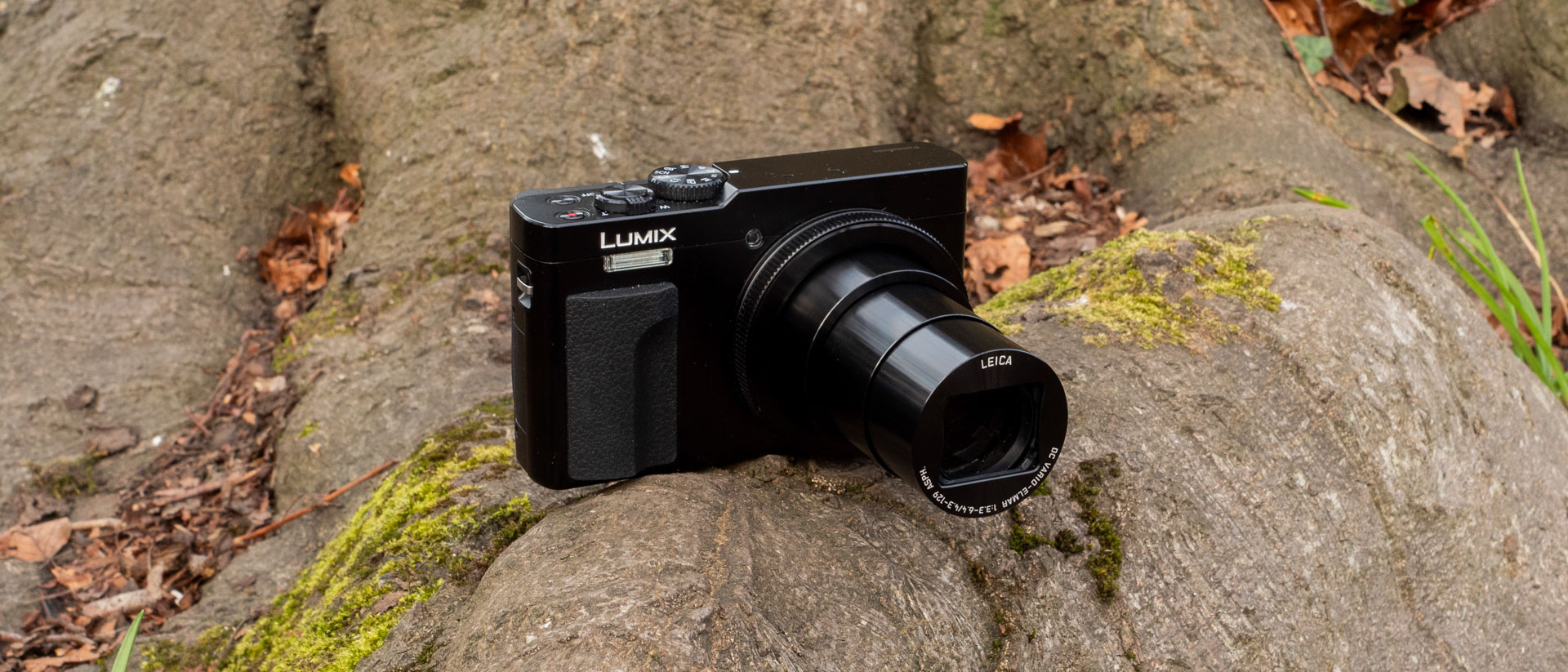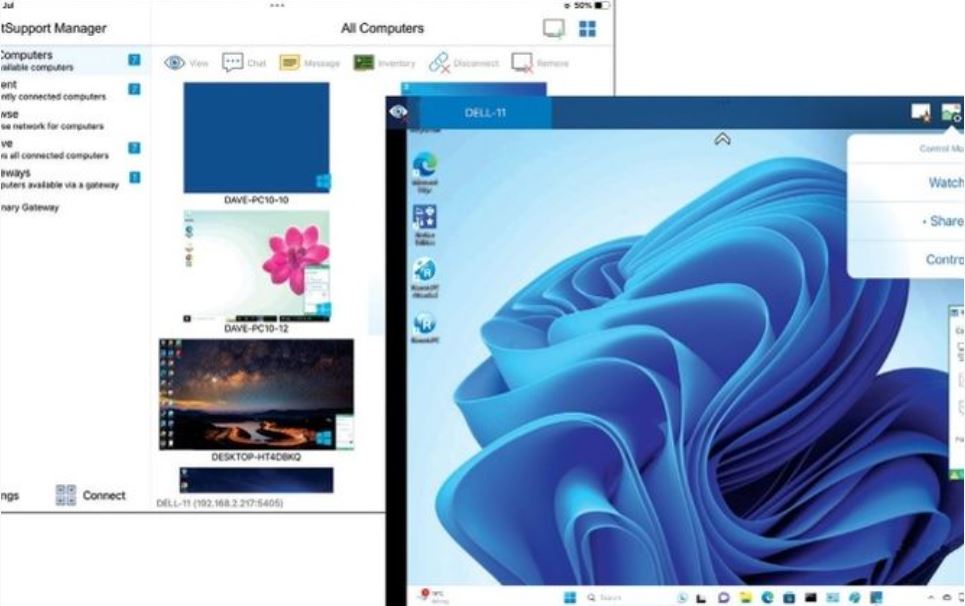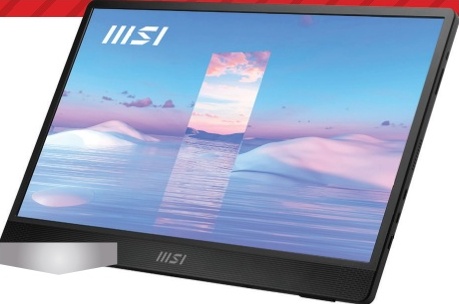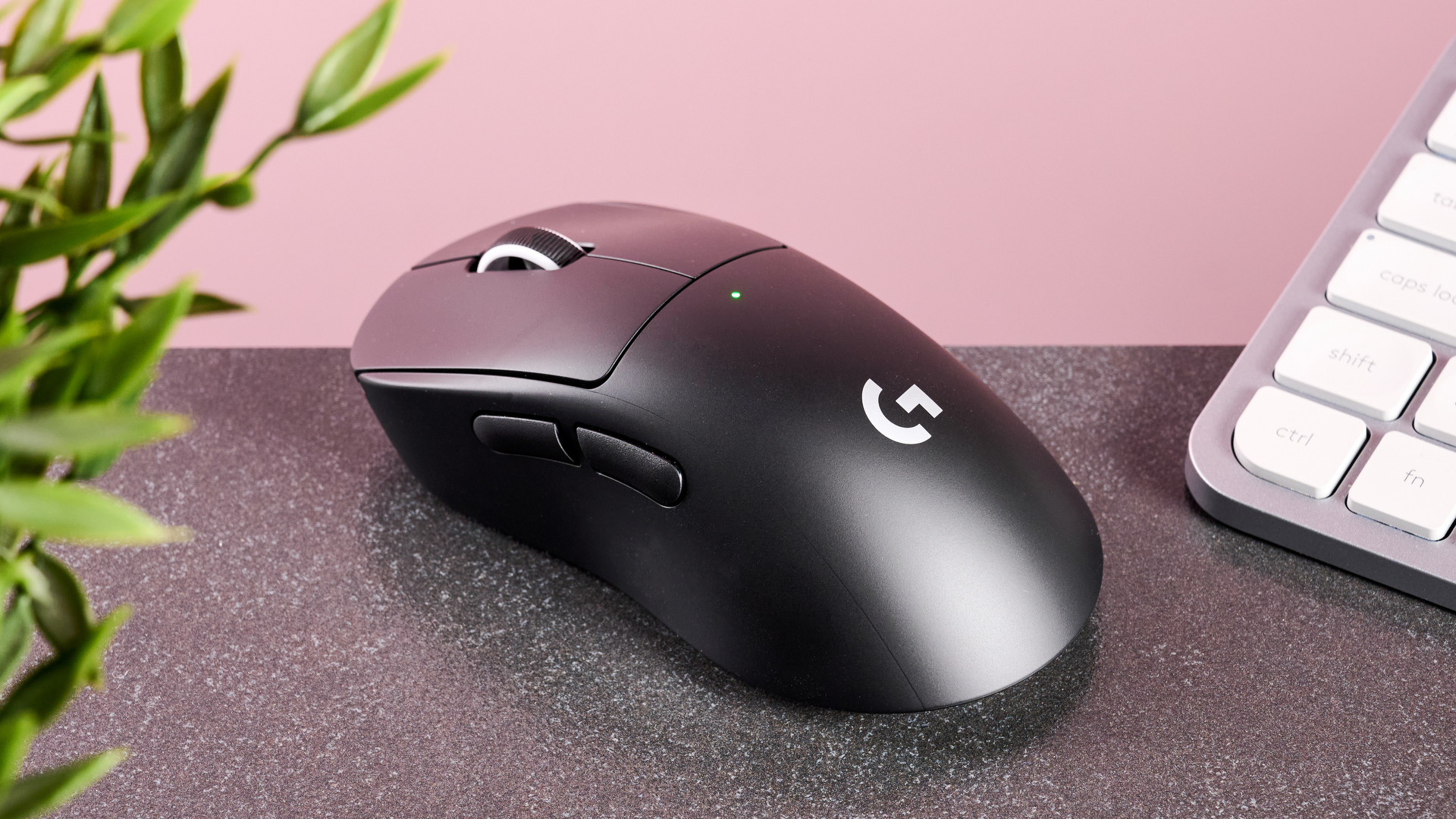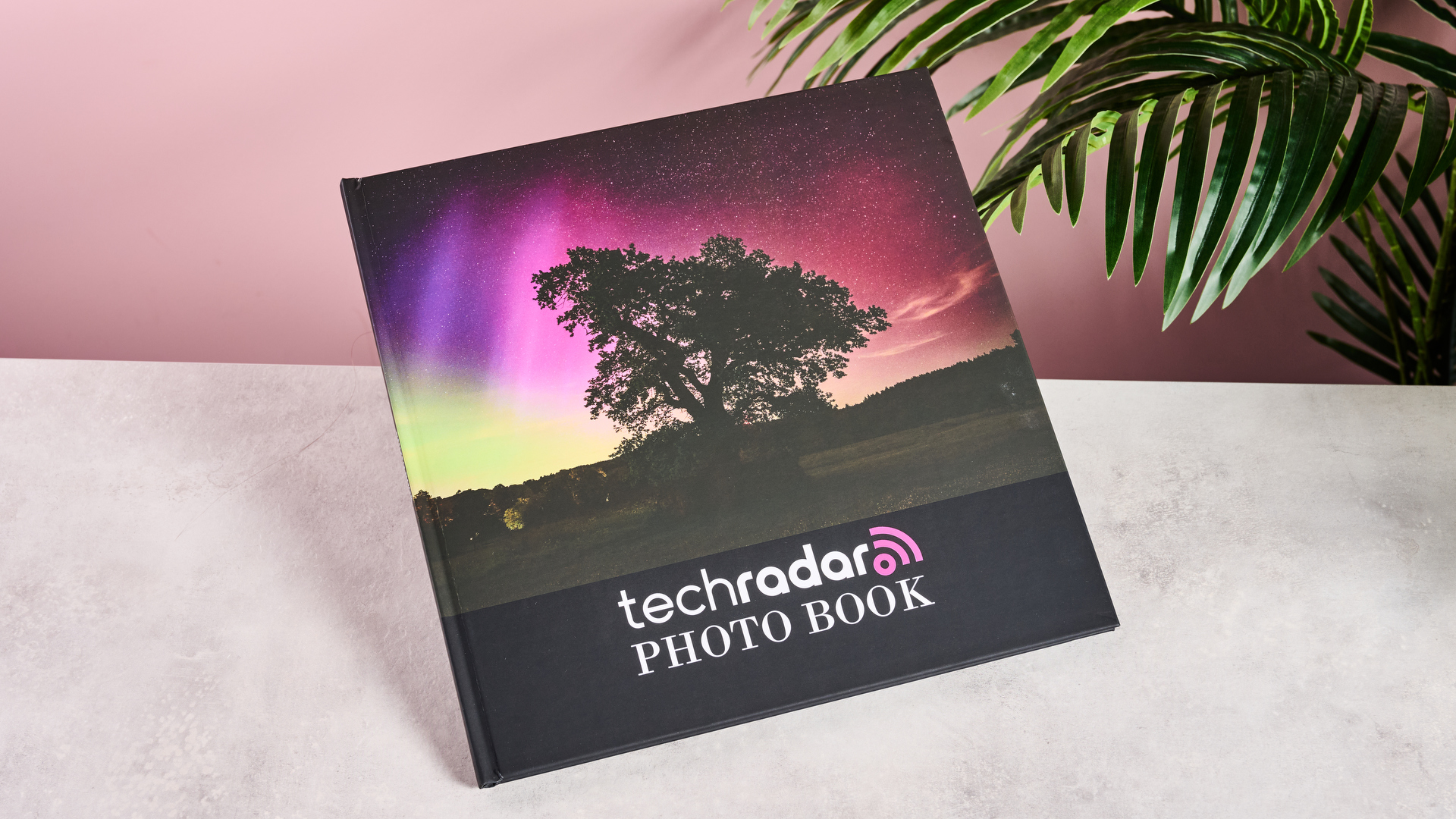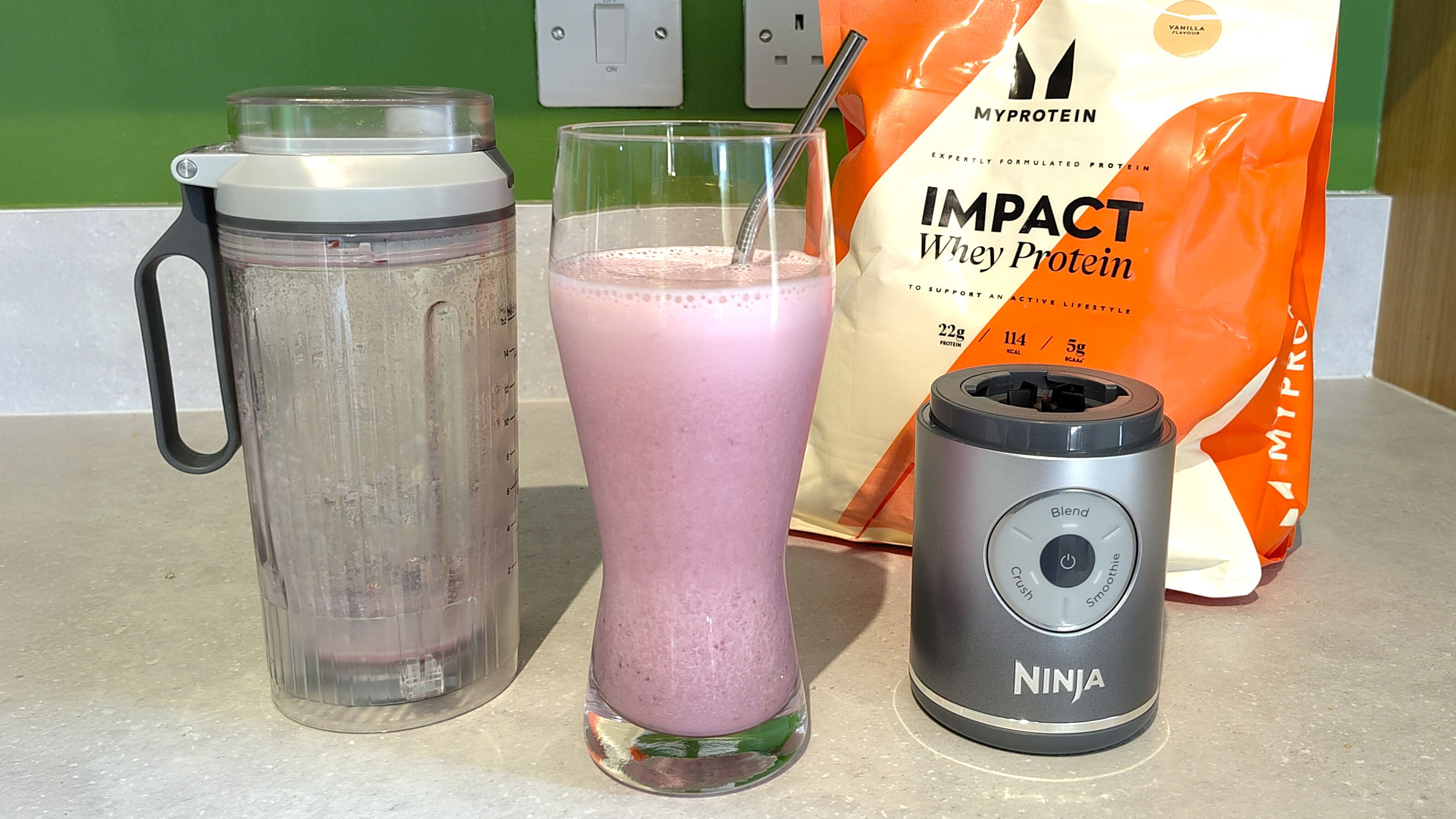TechRadar Verdict
The Xiaomi Redmi Note 10 Pro is one of the best Android bargains going, assuming you can live without 5G. You get a great screen, fast performance, long battery life and a solid camera for under $300 (£249 / around AU$360).
Pros
- +
Excellent stereo speakers
- +
Big and bold 120Hz OLED screen
- +
Long battery life
Cons
- -
No 5G
- -
Lacks stabilization for 4K video
- -
No telephoto camera
Why you can trust TechRadar
Two-minute review
As our Xiaomi Redmi Note 10 Pro review will explain, this is one of the biggest smartphone bargains around. It gets so close to the day-to-day experience of a $1000/£1000 phone you’d never guess it costs $279 / £249 (roughly AU$360).
There’s one missing feature that may put you off: 5G. This is a 4G phone. It will always be a 4G phone, so make sure you’re happy with lower-speed mobile internet for the duration of your ownership.
Video stabilization is the other issue. The Xiaomi Redmi Note 10 Pro can capture 4K video, but there is no stabilization above 1080p, rendering it next-to-useless in plenty of scenarios.
Those are the Redmi Note 10 Pro’s bad bits. The rest is gold - so much so that this ranks among the best Xiaomi phones, and arguably also the best cheap phones from any brand.
The Redmi Note 10 Pro has a large 120Hz OLED screen. Its Snapdragon 732G brings the goods for gaming, and the phone has some of the best speakers we've heard at the price.
You get a solid 108MP camera. And while you shouldn’t put too much faith in that ultra-high megapixel count, it produces nice photos and has access to a good night mode.
There’s also a highly unusual, and unusually good, macro camera. Most budget phone macro cameras are barely worth using. This one is great for nature photography.
The Redmi Note 10 Pro's battery also lasts a long time, even if you use the 120Hz screen mode for smoother scrolling.
There are mountains of substance here, and even the build quality gets more attention than we’d expect. The Redmi Note 10 Pro has a Gorilla Glass back, not the plastic we now see even in alarmingly expensive Android phones.
The strongest competition at the price includes the Xiaomi Poco X3 NFC from the same company, which is heavier, thicker and has an LCD screen rather than an OLED. It’s a little less fancy, but is also a great buy. Or there’s the Realme X50 5G, which you should buy instead if you want 5G.
Xiaomi Redmi Note 10 Pro: price and availability
- Starts at $279 / £249 (around AU$360)
- Rises to $329 for the top model
- Landing in the US and UK
Weight: 193g
Dimensions: 164 x 76.5 x 8.1mm
Display size: 6.67-inch
Resolution: 1080 x 2400
Chipset: Snapdragon 732G
RAM: 6/8GB
Storage: 64/128GB
Rear camera: 108MP + 8MP + 5MP + 2MP
Front camera: 16MP
Pre-installed software: Android 11
Battery: 5,020mAh
Charging: 33W wired
The Xiaomi Redmi Note 10 Pro was announced in March 2021, and it's available in the UK now. You'll also be able to buy this handset in the US, but an exact release date hasn't yet been revealed.
It starts at $279 / £249 (around AU$360), for the Redmi Note 10 Pro with 6GB of RAM and 64GB of storage. We are reviewing the 128GB / 6GB version, but this only costs a little more at $299 / £269 (roughly AU$390). There's also a version which keeps the storage at 128GB but ups the RAM to 8GB, for $329 (approximately £235 / AU$425) that seems to be exclusive to the US.
This may not seem hugely cheap for a 4G phone. If you really want 5G you may want to stop reading now. But the Redmi Note 10 Pro makes up for it in other areas - so much so that we rank it among the best Xiaomi phones.
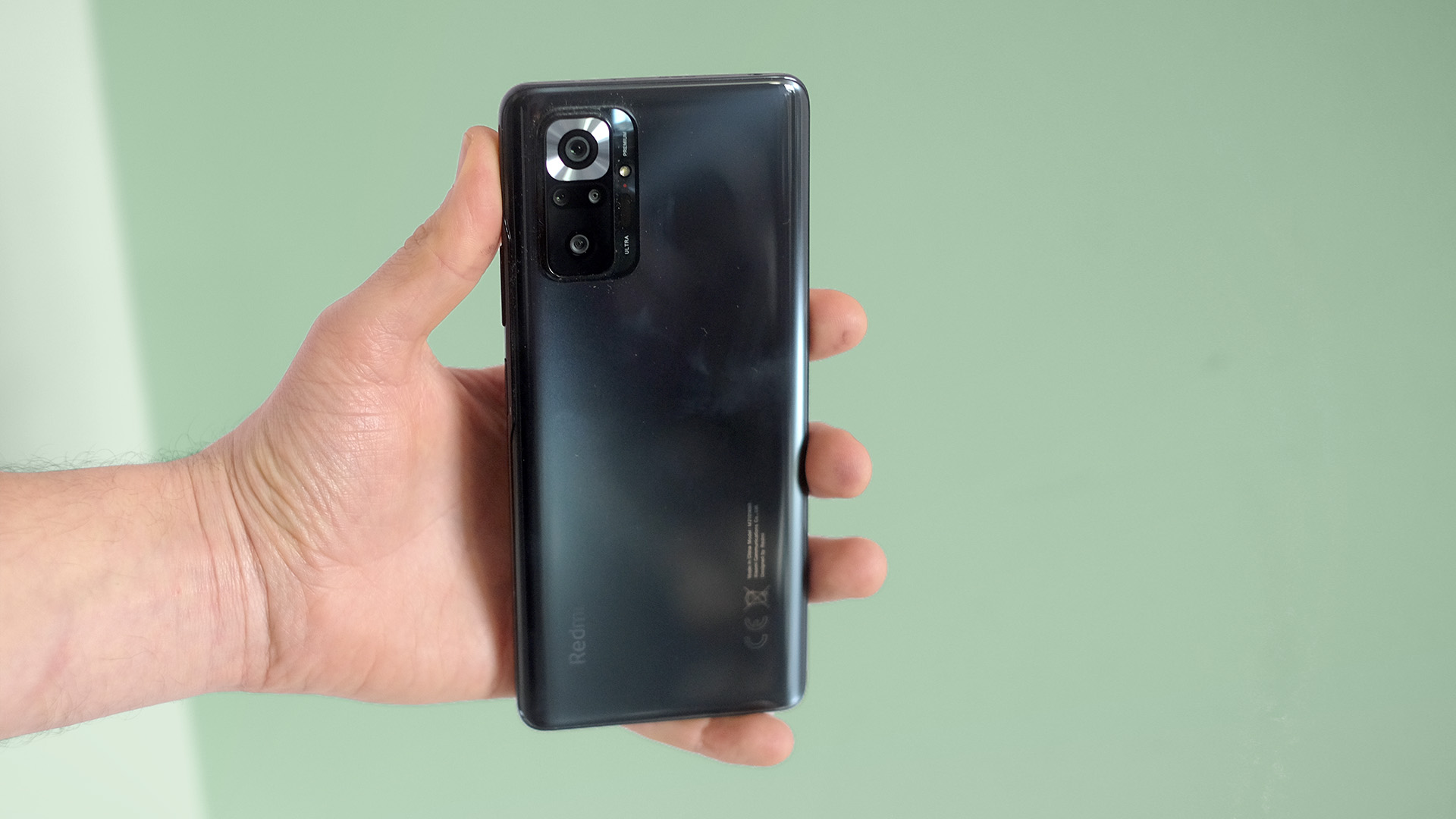
Xiaomi Redmi Note 10 Pro: design
- Glass back, plastic sides
- Relatively slim, not too heavy
- Side-mounted fingerprint scanner
The Xiaomi Redmi Note 10 Pro has a mix of high-end and low-end design traits. It’s a blend we like a lot.
For example, you get a headphone jack, like cheap phones. But the Redmi Note 10 Pro’s back is lightly curved Gorilla Glass, not the plastic many far more expensive phones use today.
The only obvious sign that the Redmi Note 10 Pro is an affordable phone is that its sides are plastic rather than metal. We’ve used the phone largely with its bundled case, and like that you can’t tell the difference anyway.
Redmi’s big design ‘sell’ here isn’t actually the glass back, though, but how techy the rear camera array looks. The main lens is given its own shiny silver surround, and the two-level contouring is there to make the camera seem even more accomplished than it is.
We end up with a phone that could easily be mistaken for one that costs $700, not $279. Sure, that camera bump isn’t pretty as such, but it doesn’t look cheap.
More substantive basics are on point too. The Redmi Note 10 Pro isn’t too thick at 8.1mm, and its sub-200g weight (193g) is not distractingly high. You’d guess it cost a lot more. Well, unless you’re a phone aficionado who knows quite how aggressively-priced phones from brands like Redmi and Realme are.
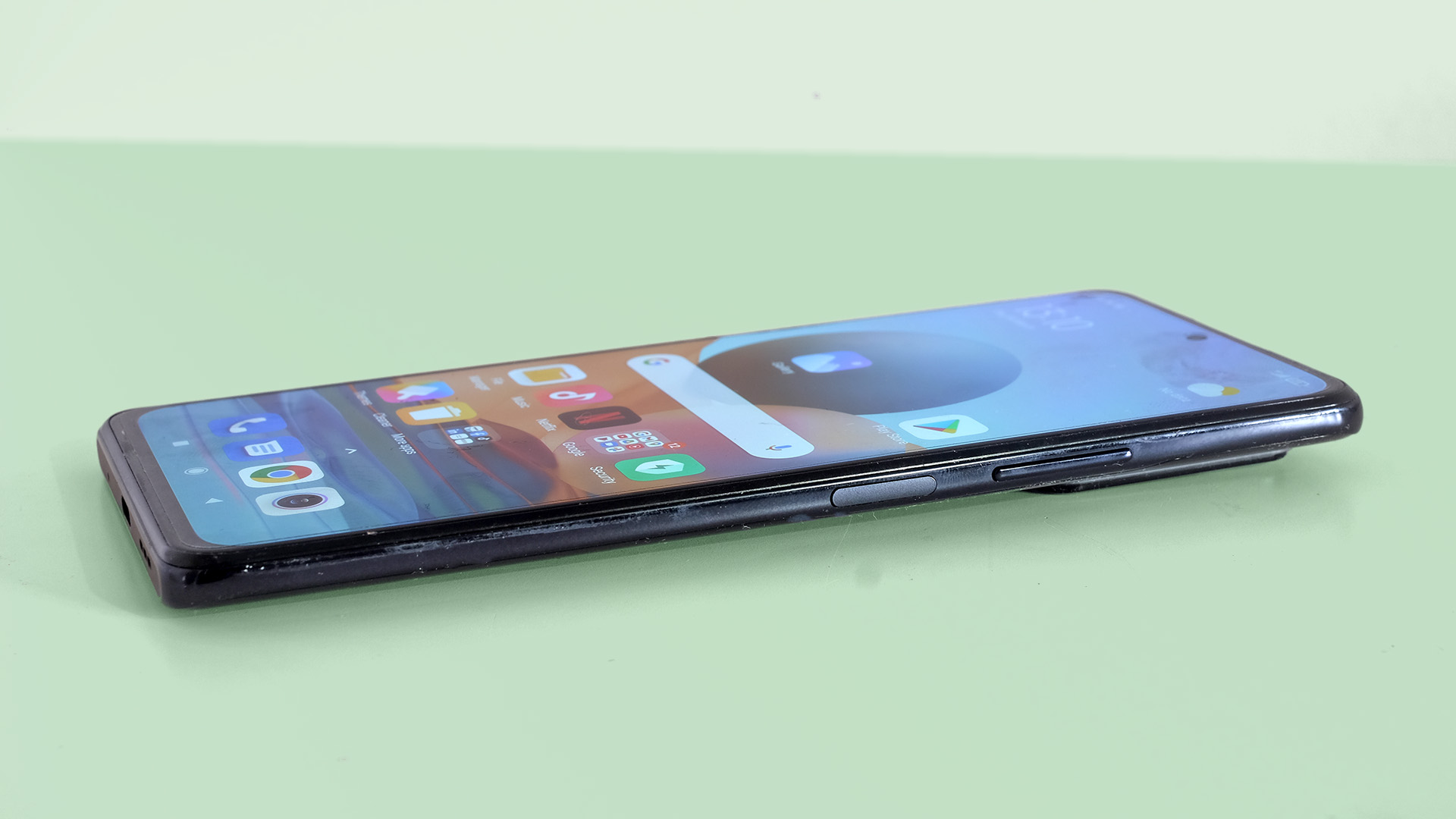
The rear on our Xiaomi Redmi Note 10 Pro review sample has a pleasant satin finish that glows silver when it catches the light. And if that seems too plain you can get it in off-white and orange colors too.
Given the price, we’re big fans of the Redmi Note 10 Pro’s hardware design. However, if you intend to use it case-free the plastic side buttons are a bit of a ‘budget’ giveaway.
The Redmi Note 10 Pro uses a side-mounted fingerprint scanner, not an in-screen one, but it’s fast and reliable. There’s also an IR blaster on the top, used by the Mi Remote app to let the phone act as a universal remote.
You only tend to see these in Chinese phones, but we’ve actually used this feature a few times in the last 12 months.
On to a feature you won’t only need in emergencies: the speakers. The Redmi Note 10 Pro’s are excellent for a cheaper phone. They are loud, offer some bass, and there are two drivers. One sits on the bottom, the other above the screen. And Redmi gives this top one two outlets, on the top and the front. This maxes out the stereo sound field and makes sure you won’t block it when playing a game.
The Redmi Note 10 Pro has one of the best speaker arrays available at under $300/£300.
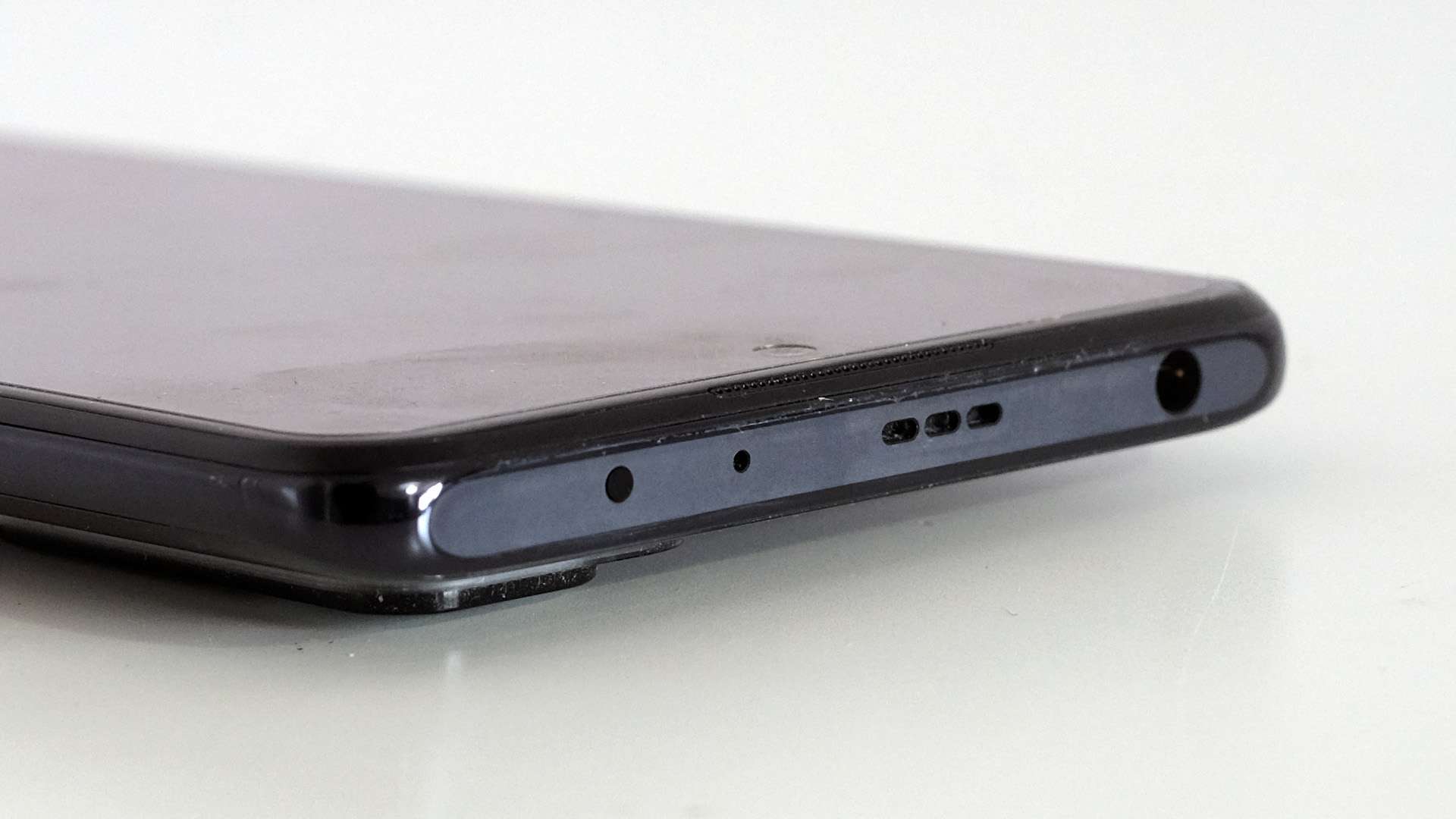
Xiaomi Redmi Note 10 Pro: display
- An affordable path to 120Hz OLED performance
- Surprisingly good brightness
- Supports HDR and wide color gamut
The Xiaomi Redmi Note 10 Pro's screen is also exemplary. It’s a large 6.67-inch 1080 x 2400 OLED display with a 120Hz panel.
It offers good sharpness, excellent contrast, deep color, and enough space to come across as a display made for video and gaming.
The OLED panel is also a great showcase for the high refresh rate. ‘120Hz’ means the image is refreshed at twice the standard rate, and it makes your app drawer scroll by much more smoothly than it would in most other affordable phones.
Cheap high refresh rate phones are nothing new, but a few of the LCD examples have slight but noticeable trails with high contrast scrolling, reducing the perceived benefit. No such problems here.
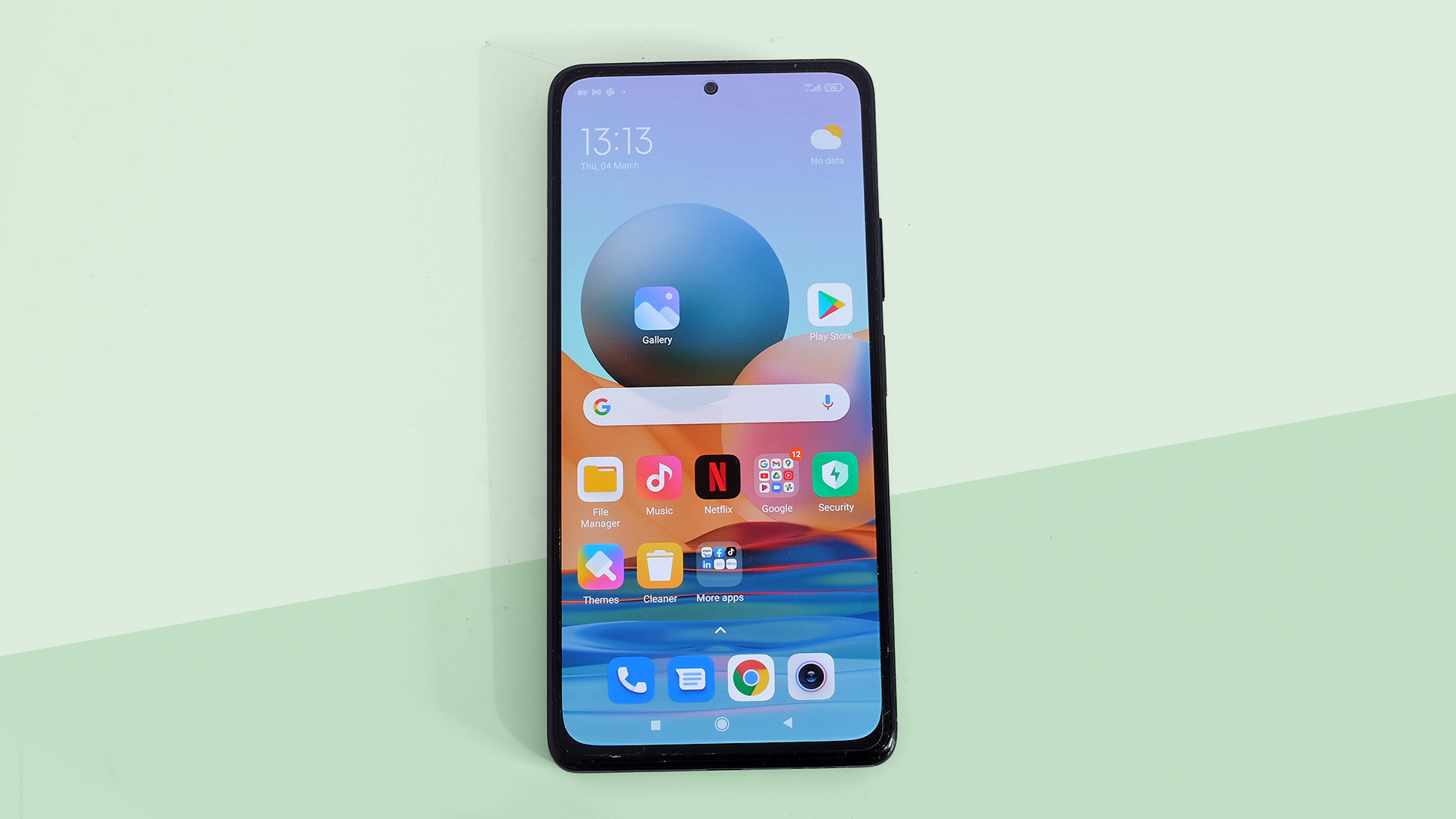
This is a wide color gamut screen that supports HDR10 video, has adjustable color, and even fairly high maximum brightness.
The Redmi Note 10 Pro will hit around 400 nits at maximum brightness indoors, but ramps the display up to 594 nits in bright conditions, according to our colorimeter. We had no issues composing photos with this screen on a bright day.
Sure, phones like the iPhone 12 Pro Max and Samsung Galaxy S21 Ultra have double the brightness. But plenty of phones three times the cost have pretty much exactly the same level on offer here.
The Redmi Note 10 Pro has a stellar screen considering its low cost.
Xiaomi Redmi Note 10 Pro: performance and specs
- Good general performance
- Games run well even with the mid-range hardware
- The speakers help with gaming
The Xiaomi Redmi Note 10 Pro also has exactly the sort of chipset we’d hope for in a phone of this class. It’s the Snapdragon 732G, a mid-range processor with some optimizations for gaming, which boils down to a higher-clocked graphics section.
This is not the most powerful processor we've seen around the price. The Snapdragon 765G and 750G, used in 5G phones, have more GPU power. Here we get a slightly less powerful 4G-ready alternative.
We couldn’t run Geekbench 5 on this review sample, as it is blocked from doing so. But judging by previous results from the Poco X3 NFC (with the same CPU), its scores are almost identical to those of a Snapdragon 765G phone. It’s in GPU-led tests like 3D Mark that you see a slight disparity.
Our advice is not to get too hung up on the test. The Redmi Note 10 Pro’s day-to-day performance is a perceptual match for phones three times the price, and it does perfectly well for gaming.
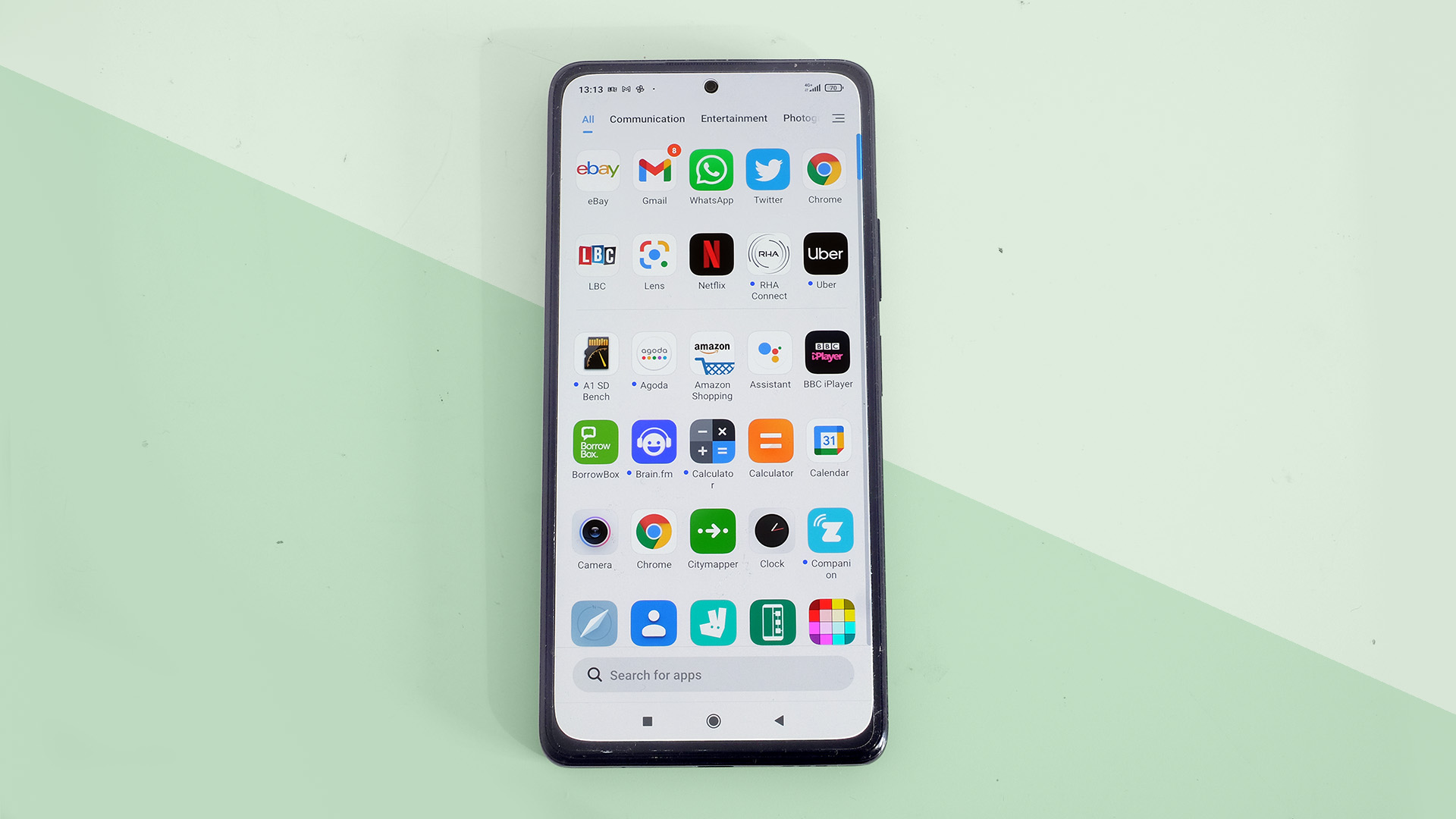
Fortnite won’t let you use the 60fps mode available to some top-end phones, and ‘Medium’ is the max visual setting. But it runs at a mostly smooth 30fps, apart from the usual drops seen when you hurtle towards the ground at the start of a match.
ARK: Survival Evolved runs acceptably even at ‘Epic’ graphics with the resolution slider maxed, although we recommend dropping down to High graphics for a higher frame rate.
Asphalt 9 even avoids most of the micro slow-downs common in cheaper phones thanks to the game’s ultra-dense environments.
The Xiaomi Redmi Note 10 Pro is a great gaming phone. And while rivals with Snapdragon 750G and 765G chipsets have slightly more gaming power, there’s a solid argument that this is the best gaming phone at the price thanks to its excellent speakers and OLED screen.
We can’t overstress how impressive the Redmi Note 10 Pro’s lack of basic cuts are. For example, it has a generous 6GB of fast LPDDR4X RAM, and the 128GB of storage is fast too. There's also a model with 8GB, and it reads at 512MB/s. This is SATA SSD-style performance, and no doubt contributes to game load speeds similar to those of a high-end mobile.
Xiaomi Redmi Note 10 Pro: camera
- Fun-to-use macro camera
- Solid night mode
- Primary camera offers good image quality
The Xiaomi Redmi Note 10 Pro has a 108MP f/1.9 primary camera sensor. It’s an eye-catching spec.
However, the part of this phone’s camera array that stands out the most is something else, the 5MP f/2.4 ‘tele-macro’. It’s one of the best phone macro cameras we’ve tested to date.
Many phones at this level have macro cameras. Almost all of them are undiluted trash, 2MP sensors with rubbish lenses that take photos that don’t even hold up on the phone’s own screen.
The Redmi Note 10 Pro’s macro has had actual effort put into its design. And getting the opportunity to use qualified superlatives about a $279 phone is in itself remarkable.
So why is the macro so good? Most half-decent phone macros use their ultra-wide cameras for macro shots, which makes it difficult to isolate a small part of a subject because the field of view is so wide. The Redmi Note 10 Pro’s macro lens has a more ‘zoomed in’ view than the primary camera, roughly 2x, making this a doddle.
You can get exceptionally close-up, the 5MP sensor can capture enough detail to expose the wonderful weirdness of nature at ultra-close quarters. And the lens throws out the background with a wonderfully blurry bokeh effect because, unlike the competition, this lens is not a total misfire.
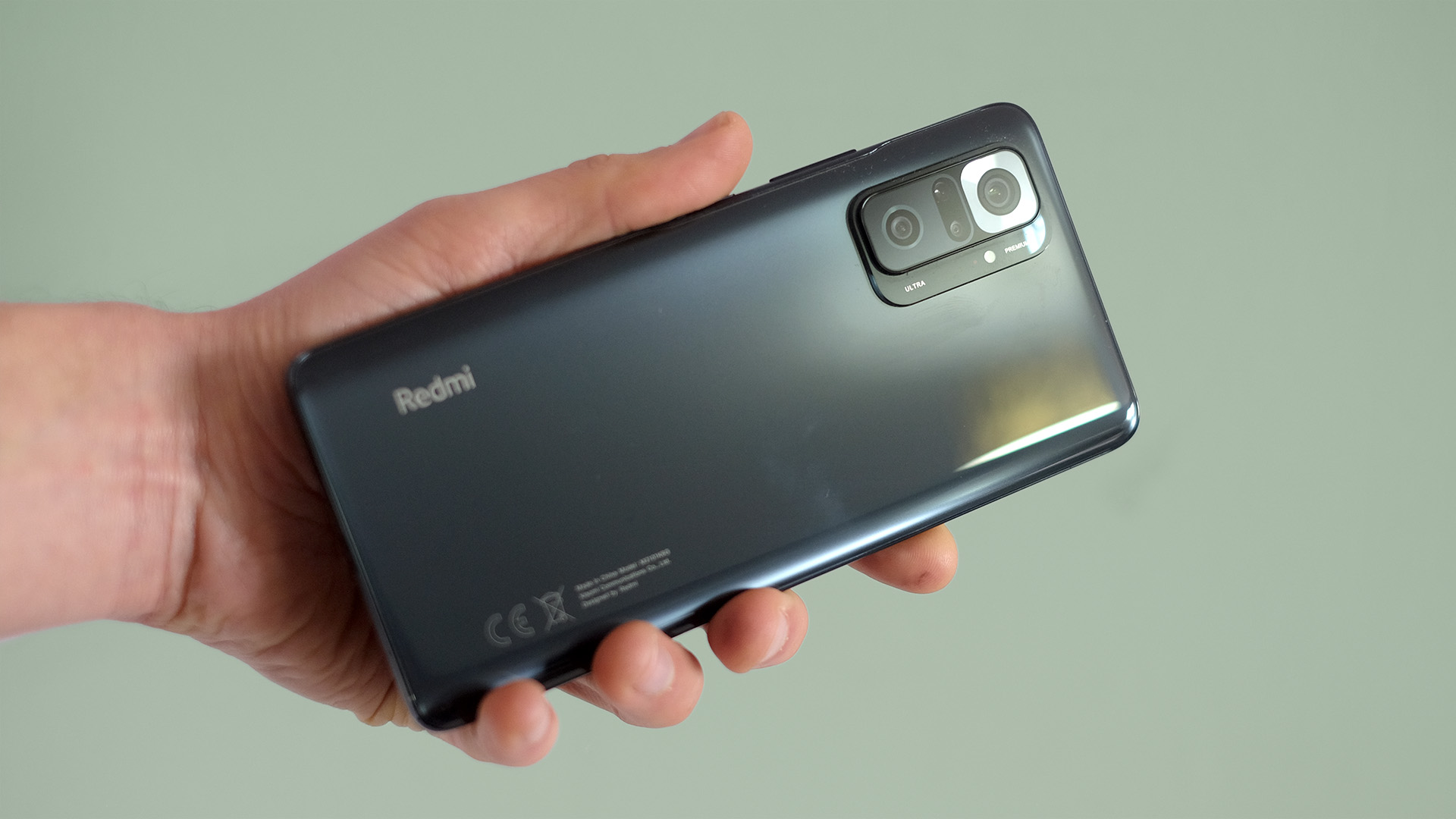
The Redmi Note 10 Pro’s macro offered us some of the most fun we’ve had with a phone camera in 2021 so far, even if a 5MP image is unlikely to win you any photography awards.
But would we rather have a dedicated zoom? Yes. Macro photography is about capturing what a specialized camera lens can see, but our eyes can’t. Not properly anyway. Zoom cameras let you shoot what you can see, but not all that well. Therefore, macro photography’s appeal is much more niche.
Zoom shots, taken using the Redmi Note 10 Pro’s 2x preset, rely on a digital crop of the 108MP sensor instead. This sensor uses 9-in-1 pixel binning, which means the information from nine pixels on the sensor is used to make one pixel in the final image. It’s not the same as, for example, a true ultra-high resolution DSLR sensor, so zoomed images are not spectacularly detailed.
That said, 2x images are pretty convincing and the processing does bring out more detail in some fine-knit patterns than you see in a crop of a standard 12MP shot.
Standard view Redmi Note 10 Pro images are on the whole very pleasant, particularly given the price. The Pixel 4a handles HDR image contrast a little better, as we see some flattening of image data in brighter areas and a little haze in the mid-tones. But this only really applies to fairly tricky scenes.
It’s an effect of what has become common among cheaper phones: the Xiaomi Redmi Note 10 Pro has a Samsung HM2 sensor. And like several other high-res Samsung sensors its results aren’t quite as ‘high-end’ as they sound on paper. Still, at the price we aren't complaining.
The Redmi Note 10 Pro’s night mode is also up there with the very best in this category. Shoot using the auto mode and very dark areas look near-black. The night mode genuinely reveals new data in the shadows. We tried to recreate the effect by fiddling with an auto mode low-light shot in Photoshop and only uncovered a hellscape of noise and sensor errors.
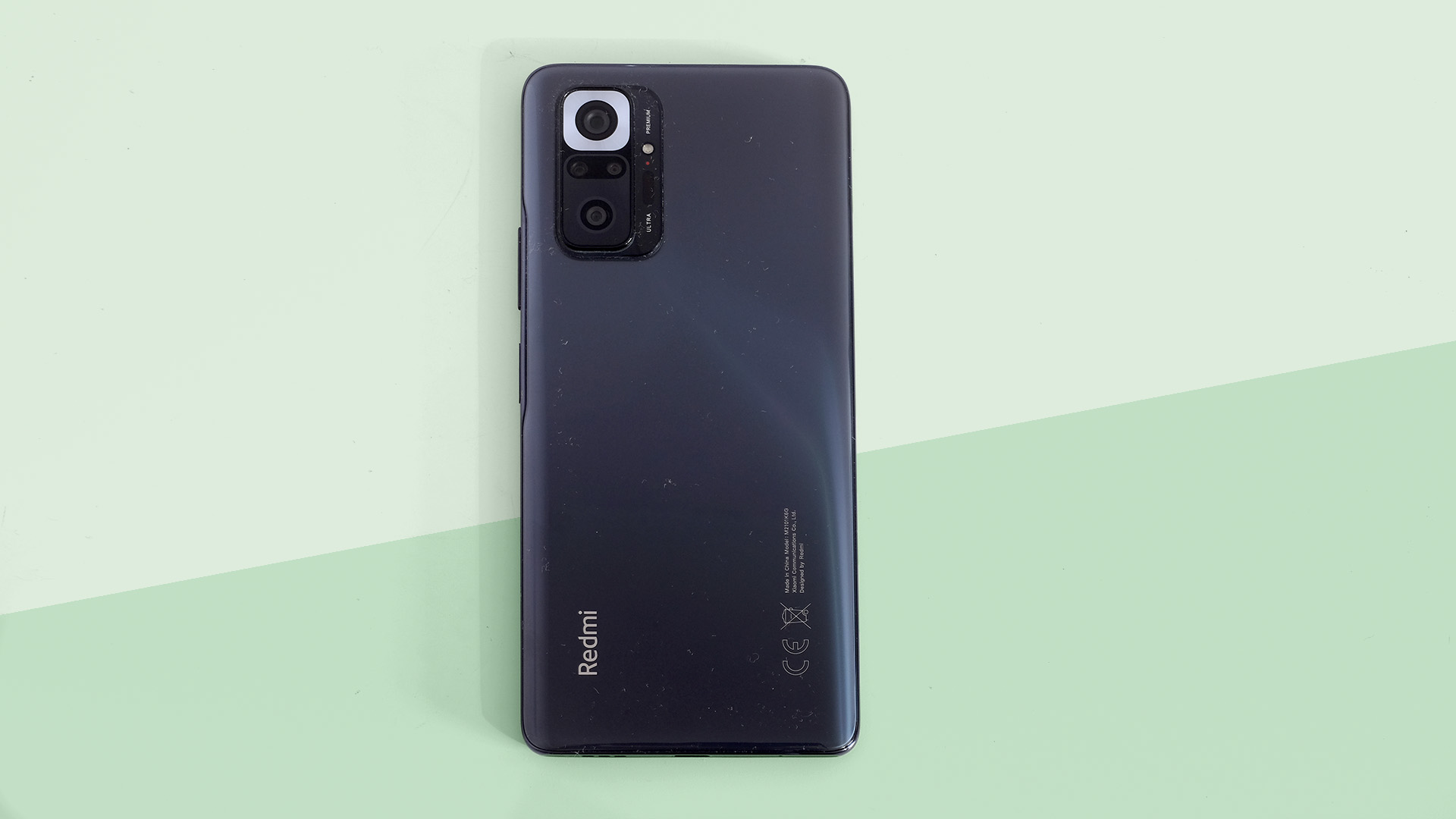
This night mode also has a minimal softening effect. It’s a great low-light result at such a low price.
The Redmi Note 10 Pro also has an ultra-wide camera with an 8MP f/2.2 Sony IMX355 sensor. This was used as the selfie camera on the Pixel 3. It’s probably the least interesting picture-taking camera on the phone, and is the one we’ve used least.
Dynamic range and detail aren’t on the same level as the primary camera. And software optimizations are slightly lacking too. The Redmi team could have fixed some of the occasional blown highlights with (better) multi-exposure techniques, and you can’t use the night mode with the ultra-wide camera.
Still, the Xiaomi Redmi Note 10 Pro's wide camera is still perfectly acceptable at such a low price.
The very last camera is a low-end 2MP f/2.4 OmniVison sensor used to create depth maps for the background blurring portrait mode. It will do the job for pictures of people, but we find it messes up its mapping of more complicated objects. If the Redmi Note 10 Pro has a ‘filler’ camera, it’s this one.
The front camera uses the 16MP Sony IMX471, seen in the OnePlus 7T. It tells a story similar to the ultra-wide. We get decent hardware, and more than enough resolution. But dynamic range optimization could be improved. The Realme X50 5G does better in this respect, for example.
How about video? The Xiaomi Redmi Note 10 Pro can shoot at up to 4K resolution, 30 frames per second. This footage looks good but is completely unstabilized, making it more-or-less unusable if you’ll use it while walking around.
Stabilization is only available at 1080p, 30 frames per second, which is a shame.
Xiaomi Redmi Note 10 Pro: camera samples












Xiaomi Redmi Note 10 Pro: battery life
- Great stamina, with the 60Hz or 120Hz refresh rate
- Charges to 55% in 30 mins
The Xiaomi Redmi Note 10 Pro has a 5,020mAh battery, which seems a fairly high capacity for an affordable phone this slim.
Fire up the Redmi Note 10 Pro for the first time and it will revert to its 60Hz display refresh rate, just half of its maximum. This is likely to give the best first impression of battery life, as higher refresh rates consume more power. We left it on this setting for the first few days and were more than happy with the results.
You can expect 35-45% charge left by midnight after a moderate day’s use.
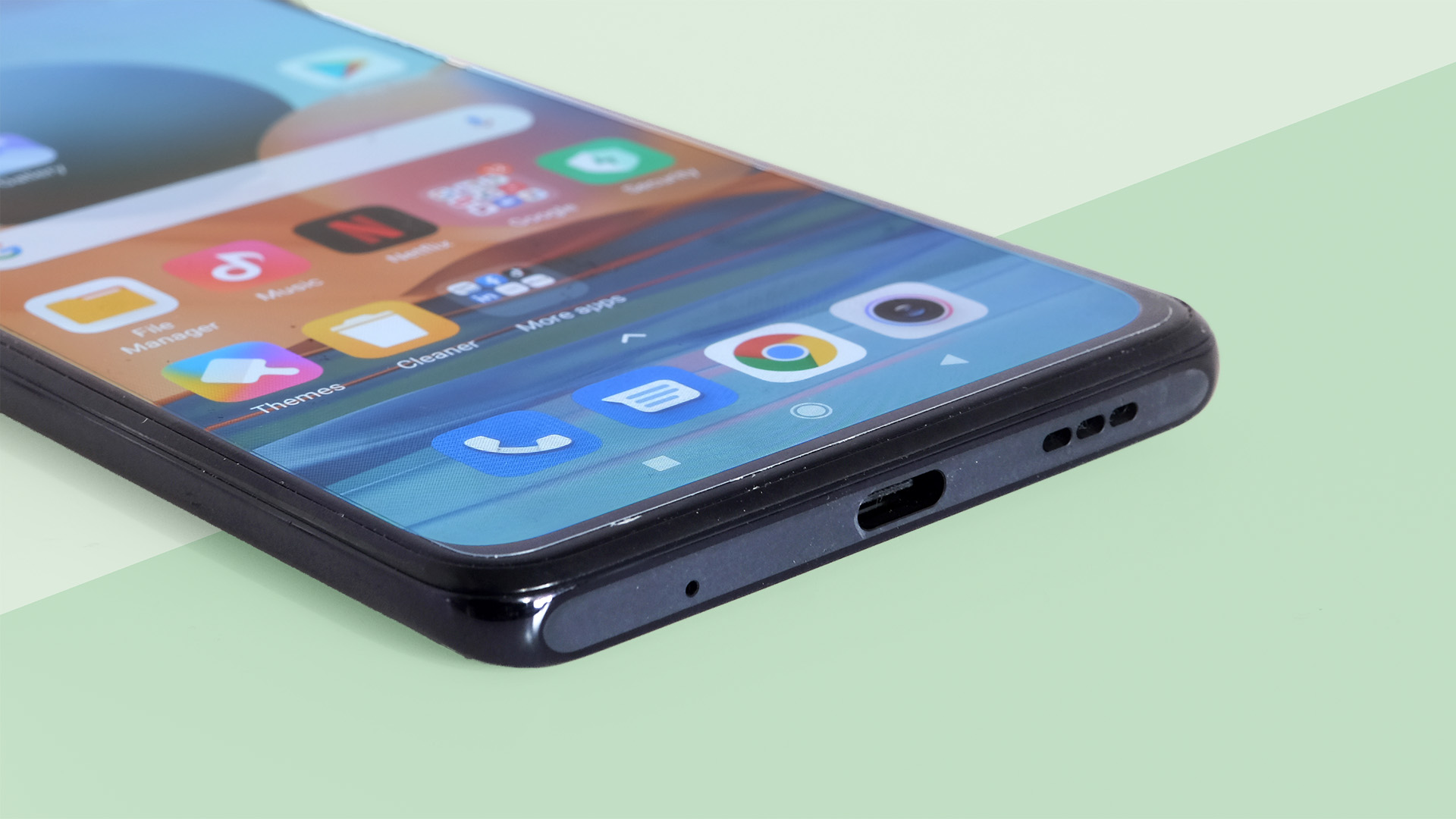
We half expected its stamina to nosedive after switching to 120Hz, but need not have worried. The Redmi Note 10 Pro still seems to routinely end up with 30-35% or more charge left by bedtime, after a day of pretty solid use.
Companies like Xiaomi tend to achieve this sort of long battery life with very tight controls over background processes. And when these are too invasive, they can become annoying, closing audio apps, and delaying notifications. We didn’t see anything like this in the Redmi Note 10 Pro though.
The phone even has fast charging. A 33W power brick takes you from flat to 55% in half an hour according to our testing.
Should you buy the Xiaomi Redmi Note 10 Pro?
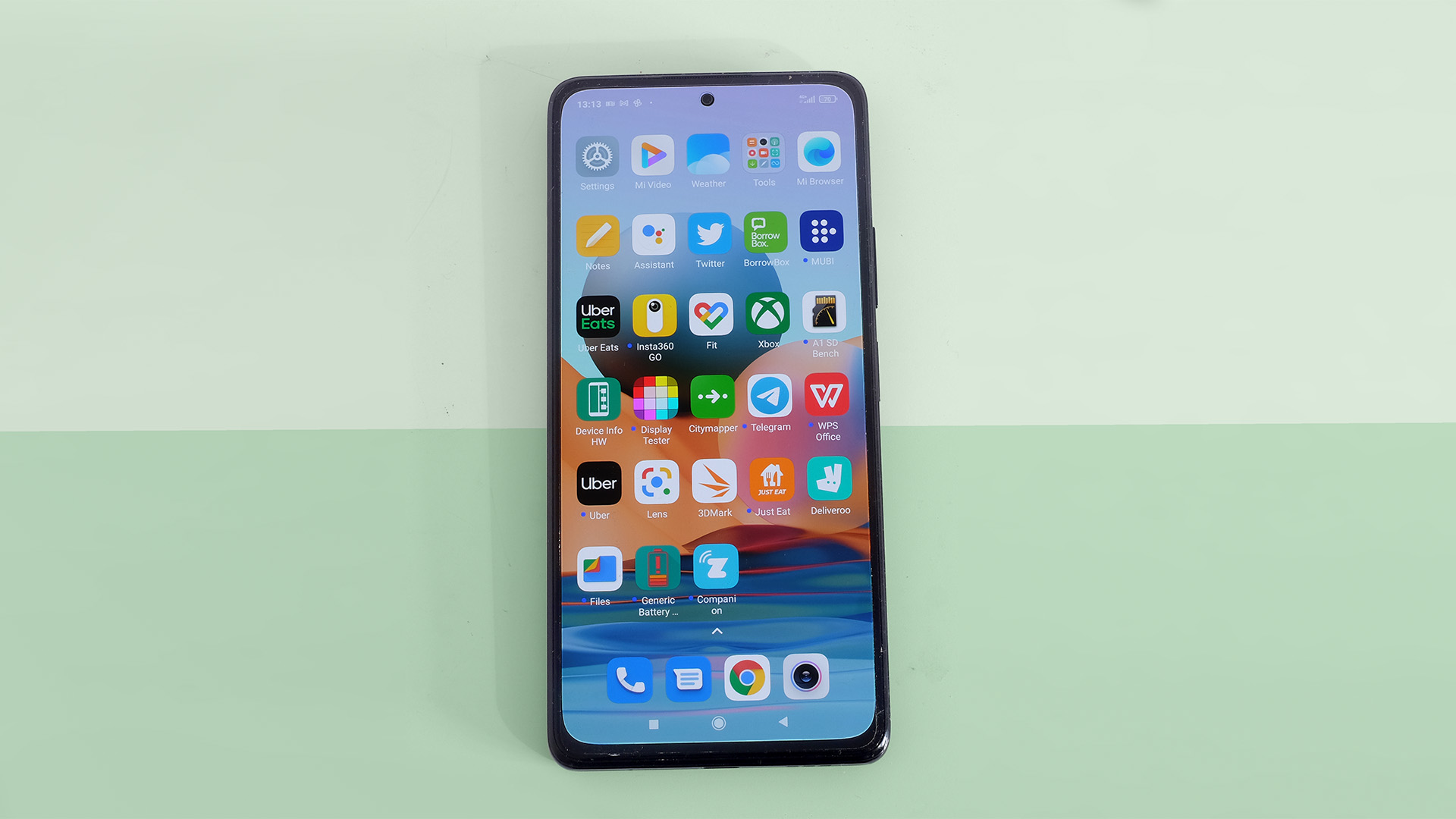
Buy it if...
You want an affordable gaming phone
The Redmi Note 10 Pro is a great phone for gaming. While slightly more powerful phones are available at a similar price, this one has a solid gaming-series processor bolstered by excellent stereo speakers, long battery life, and a great OLED screen.
You want to experience 120Hz display tech
Want the best screen you can get for under $300/£300? The Redmi Note 10 Pro needs to be on your list. Its 6.67-inch display is large, has a 120Hz refresh rate, good color, and the exceptional contrast only really possible with an OLED panel.
You want the high-end experience for less cash
The Redmi Note 10 Pro is one of the cheapest phones to offer an experience similar to a $1000/£1000 phone. It has a great screen, very good general performance, a strong main camera, and a glass back. It also outlasts many phones in that ultra-expensive class, with long battery life even in its 120Hz refresh rate mode.
Don't buy it if...
You want to try 5G
If you want to try out 5G, the Redmi Note 10 Pro isn’t the phone to get. It does not have a 5G modem, and this is not something that can be patched in with a software update in future. This phone does not have 5G, and will never have 5G.
You’re big on zoom photography
The Redmi Note 10 Pro does not have a dedicated zoom camera, so think twice if you were drawn in by the advanced-looking rear camera array. Its 2x digital zoom does a fairly good job, but you’ll have to spend more if you’re after an optical zoom lens.
Video capture is a top priority
You should also think twice if you shoot a lot of video. The Redmi Note 10 Pro can shoot 4K video, but it is completely unstabilized and therefore pretty much useless in many situations. Software stabilization is only available at 1080p, a mode with less detail and more digital artifacts in the final result.
Also consider
If our Xiaomi Redmi Note 10 Pro review has you considering other options, here are three more options to ponder.
Xiaomi Poco X3 NFC
The Redmi Note 10 Pro faces some competition from other Xiaomi phones, most notably the Xiaomi Poco X3 NFC. This has similarly good battery life and a 120Hz screen, but it uses LCD, which isn't as good as OLED. It's slightly cheaper though.
Check out our Xiaomi Poco X3 NFC review
Realme 9 5G
The Realme 9 5G costs the same amount but has different highlights, including 5G, a capable camera, a decent design and slick software. But it charges slower and has a worse screen.
Check out our Realme 9 5G review
OnePlus Nord CE 2
The OnePlus Nord CE 2 costs a little bit more, but benefits from faster charging, a great design and an even better interface - plus 5G.
Check out our OnePlus Nord CE 2 review
First reviewed: March 2021
Andrew is a freelance journalist and has been writing and editing for some of the UK's top tech and lifestyle publications including TrustedReviews, Stuff, T3, TechRadar, Lifehacker and others.
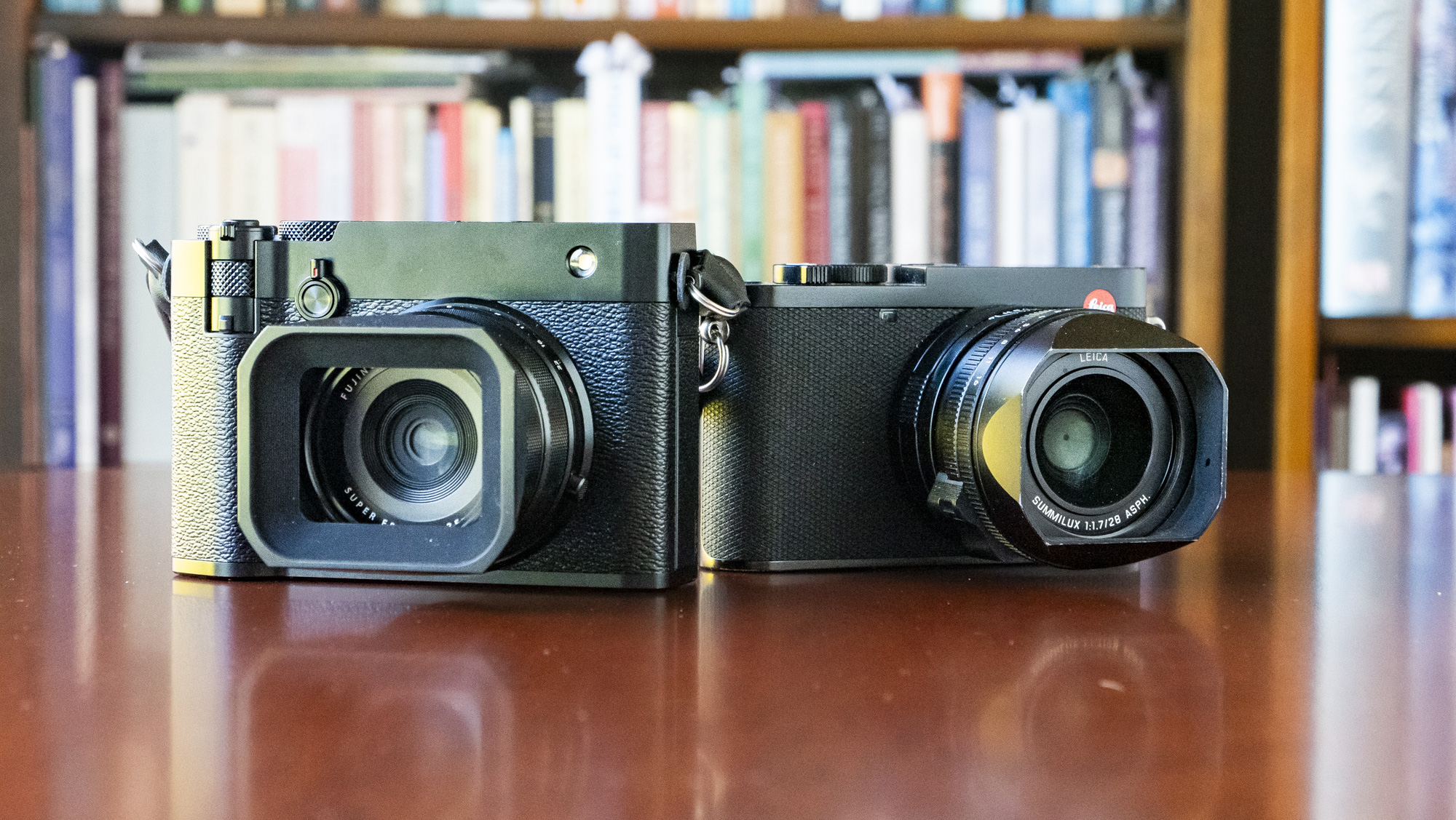
Fujifilm GFX100RF vs Leica Q3: I compared two of the best compact cameras money can buy, and I have a definite favorite

Google Cloud Next 2025 — all the news and updates as it happens

Hades 2 will be a Nintendo Switch and Switch 2 exclusive at launch, but don't worry it's still coming to other platforms later
